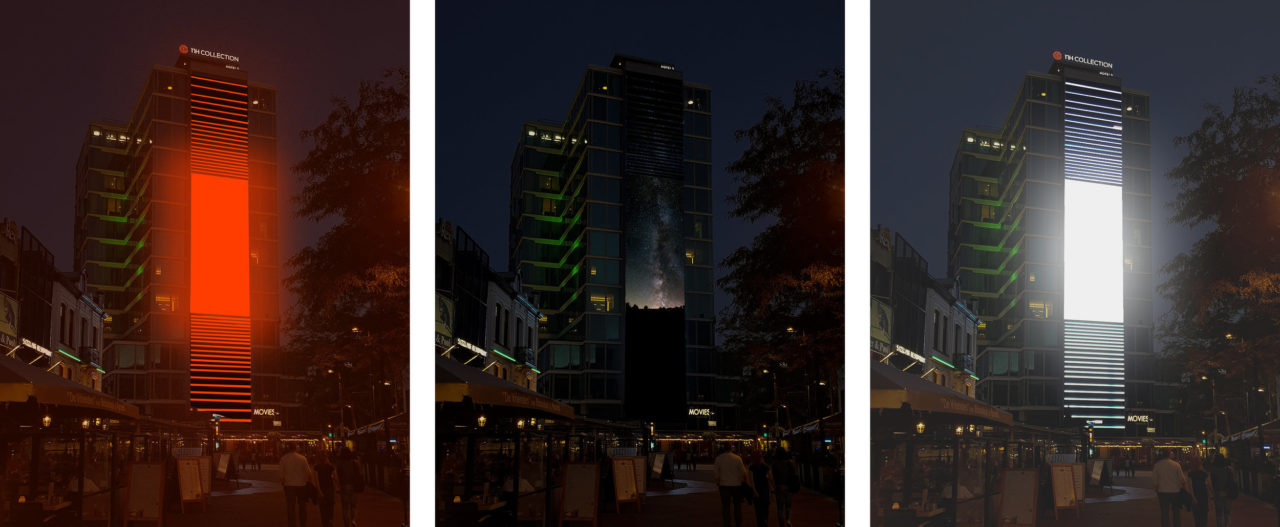What is the influence of light pollution to current climate issues? KABK Photography alumna Tessa van Rijn wishes to draw attention to this topic and presents ‘Night light’ during the Light Art Festival GLOW in Eindhoven.
Tessa van Rijn graduated in 2017 from the Photography department at the Royal Academy of Art, The Hague (KABK) with a project about light pollution, entitled Darkest Light. For this project she went looking for the dark; the best method for this is to find the Milky Way. A search through the Netherlands brought her to the Boschplaat on Terschelling. There, in the first Dark Sky Park in the Netherlands, Tessa has translated her magical experience into her graduation project Darkest Light.
In the 13th edition of GLOW festival in Eindhoven, she presents her new work 'Nachtlicht', which is inspired by her graduation project. In order to make people aware of light pollution, she will let the Milky Way be projected on a (commercial) LED screen of 173m2, in the center of Eindhoven.
Based on experiments and fi studies, I investigate the relationship between mankind, technology and nature. Within these fields, I focus on the influence of mankind on its natural surroundings. Especially for GLOW and in the 'city of light' Eindhoven, I challenged myself to create a light artwork which focussed on the shadow (dark) side of our light behaviour.
Night light
Night light consists of a 4-minute photo animation. The animation starts with a slow flashing, red SOS distress signal (Morse code) that illuminates the entire environment. When this signal stops and the eyes of the visitors get used to the dark, the screen starts filling with stars which slowly make visible the contours of the Milky Way, which in turn gives way to an artificial white light arising from the horizon and fills the entire screen and the surrounding environment with bright white light. After a few seconds the animation ends abruptly, leaving a dark building on sight.







